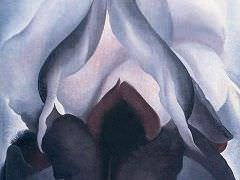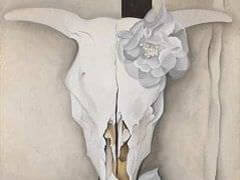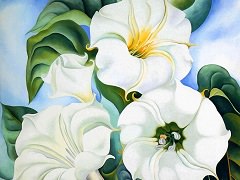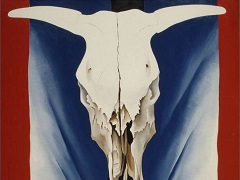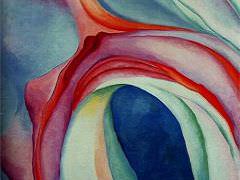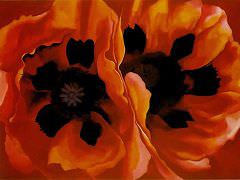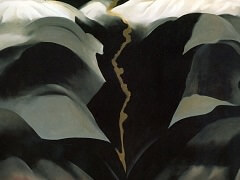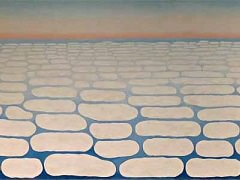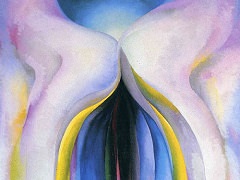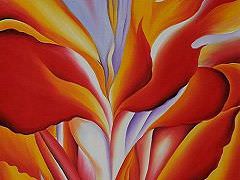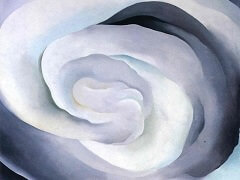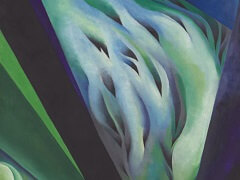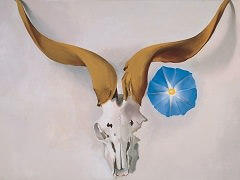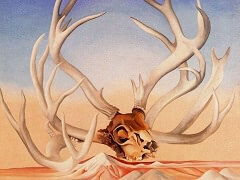Ram's Head with Hollyhock, 1935 by Georgia O'Keeffe
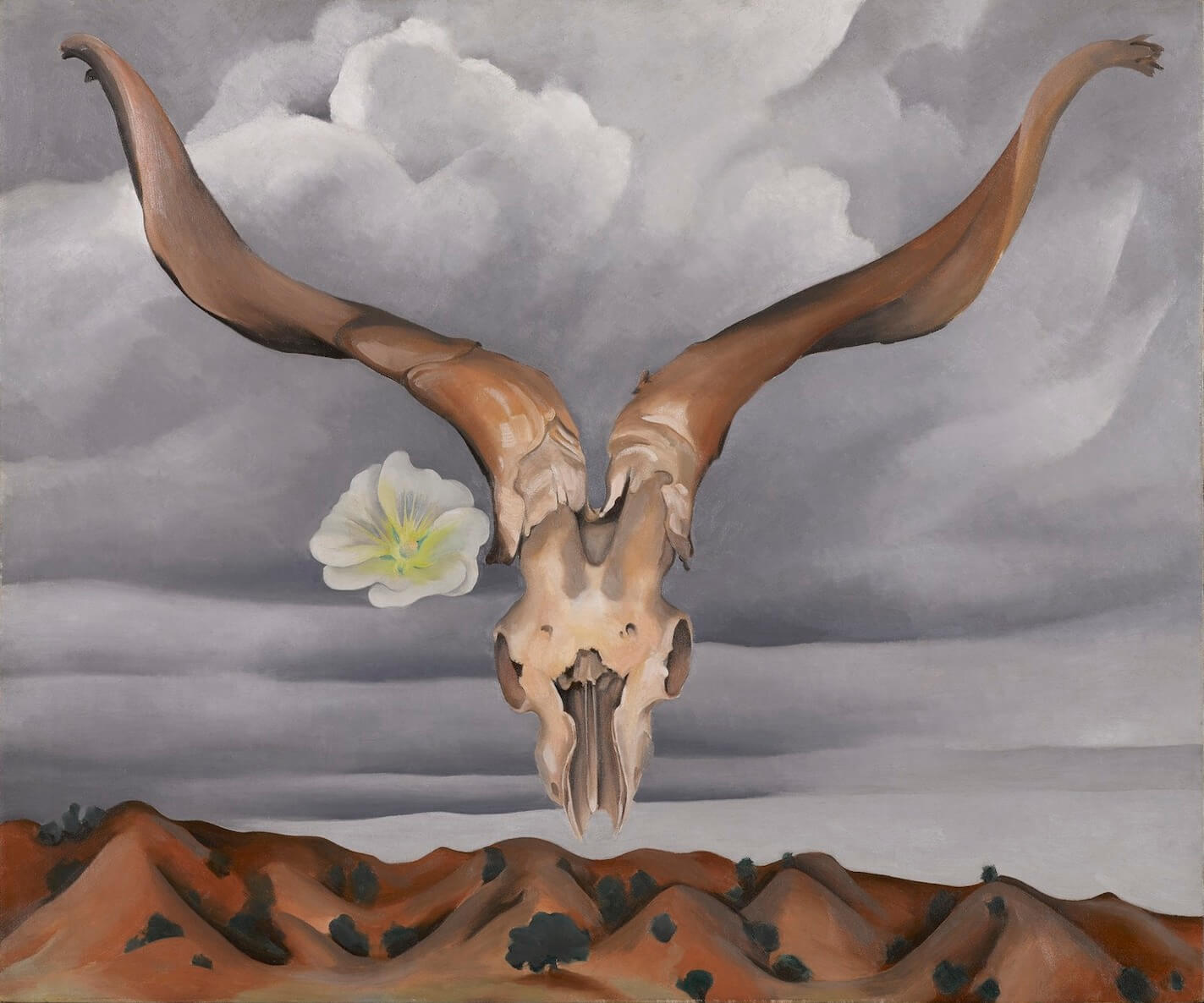
In 1935 - after a period of personal and professional stress during which she was absent from New Mexico and nearly abandoned her art - O'Keeffe returned to the Southwest. She was rejuvenated by the dramatic landscaped of the high desert country, and it showed in her canvases from that summer's sojourn. Ram's Head with Hollyhock announced the new freedom and inspiration; the design continues the formal play and the interest in evocative combinations of subjects first tackled in the early 1930s, but now handled with unprecedented assuredness. The enigmatic juxtaposition of skeletal, flora, and landscape images - a virtual catalogue of the subjects that had earlier garnered her acclaim - provoked new interest in O'Keeffe's work, especially after the fallow period that had immediately preceded their introduction in January 1936. For the exhibition at Stieglitz's gallery, Marsden Hartley, whose prefatory comments had occasioned such discomfort at O'Keeffe's showing in 1921, was reenlisted to prepare "A Second outline in Portraiture." Amidst the exhibition's Southwestern flowers, Ghost Ranch landscapes, and emblematic still life of bone and feather, Hartley singled out the mysterious ram's head hovering above the desert. It seemed to him "a transfiguration - as if the bone, divested of its physical usages - had suddenly learned of its own esoteric significance, had discovered the meaning of its own integration through the processes of disintegration, ascending to the sphere of its own reality, in the presence of skies that are not troubled, being accustomed to superior spectacles - and of hills that are ready to receive."
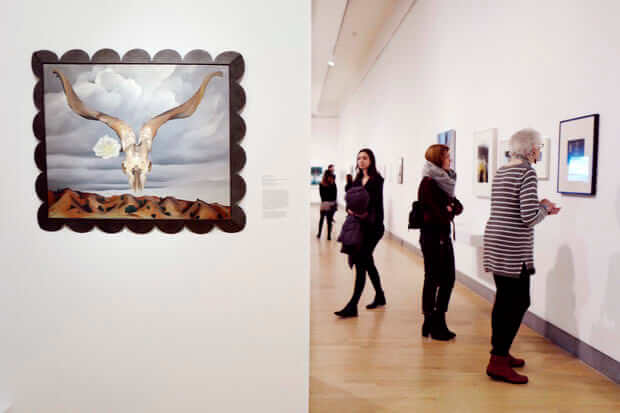
Hartley concluded that this "transmigration of bone" shared with the earlier skeletal subjects "the spirit of death," and announced the newest phase of the artist's development "portraying the journey of her own inner states of being." In his biographical interpretation, Hartley discovered not despair, but joy and affirmation. O'Keeffe having "known the meaning of death of late and having returned with valiance to the meaning of life," approached the work and the world with new confidence. Ultimately, Hartley saw the Ram's Head with Hollyhock as moving beyond the "personalism" that had characterized her earlier production. "There is the new image living its own life irrespective almost of the person who performed it."

